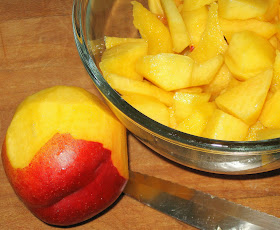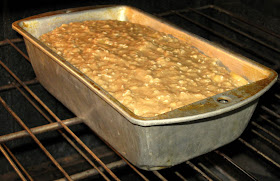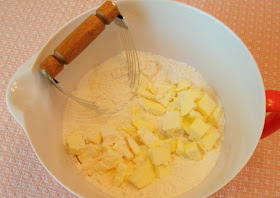
Can peaches and nectarines fraternize successfully? Is one more deserving of respect than the other? My opinion? "Yes" to the former, and a resounding "no" to the latter.
There are those among us who cringe at the velveteen-like fuzz of the peach, the same way we recoil at fingernails on a chalkboard (my mother was one of these--she hated touching the fuzz), while others turn up their nose at the poor smooth-skinned nectarine. We always hear the phrase "peaches and cream," but never "nectarines and cream". . . why is that?
Did you know, though, that the nectarine is not a cross between a peach and a plum? That's the old wives' tale I'd always heard growing up. And, experts believe that peaches and nectarines in all likelihood have a "parallel history." Apparently, the two fruits share the same seed heritage. Agricultural scholars inform us that peach/nectarine seeds made their way to Persia from China, then travelled on to Greece and Rome. From there they meandered into the balmier areas of Europe, as seeds, not unlike people, are wont to do. We have the Spaniards to thank for bringing peach/nectarine trees and seeds to the New World via none other than Christopher Columbus. At some point in the 1500's, the trees were recorded as growing in Mexico. And Mexico, as we all know, is snuggled right next to America. Fraternization? Oh, I think so.
 So, with that historical foundation firmly established, I feel justified at this point in telling you that this morning I used the fruit of both to make a hearty loaf of what I'll refer to simply as peach bread. I didn't have enough pieces of either fruit on their own for the whole loaf. But that was fine, because once peeled, cut up, and tossed in my bowl, the two fruits yielded the perfect amount, and they mingled together most harmoniously.
So, with that historical foundation firmly established, I feel justified at this point in telling you that this morning I used the fruit of both to make a hearty loaf of what I'll refer to simply as peach bread. I didn't have enough pieces of either fruit on their own for the whole loaf. But that was fine, because once peeled, cut up, and tossed in my bowl, the two fruits yielded the perfect amount, and they mingled together most harmoniously. Unless you have remarkable children who are dietarily enlightened, this quick bread will probably hold more appeal for the adults in your household. It's not very sweet, and it contains not only a good portion of whole wheat flour but also oatmeal. And, while my intention is not to shock, I feel compelled to inform you that it contains . . . no butter or heavy cream! Just a modest amount of canola/vegetable oil. (You okay? Take a deep breath . . . and another . . . I know I'm venturing outside of the usual Jane's Sweets comfort zone here.)
Unless you have remarkable children who are dietarily enlightened, this quick bread will probably hold more appeal for the adults in your household. It's not very sweet, and it contains not only a good portion of whole wheat flour but also oatmeal. And, while my intention is not to shock, I feel compelled to inform you that it contains . . . no butter or heavy cream! Just a modest amount of canola/vegetable oil. (You okay? Take a deep breath . . . and another . . . I know I'm venturing outside of the usual Jane's Sweets comfort zone here.)This recipe is very much like one in the King Arthur Flour Whole Grain Baking cookbook called Peach Oatmeal Bread. The differences in my version are the inclusion of a small portion of AP flour, and 25 percent less whole wheat flour; larger-sized chunks of not just peach, but also nectarine, than their recipe calls for; and, more almond extract. I've renamed the recipe Whole Wheat Peach Bread because the flavor of the whole wheat is very evident, and the oatmeal flavor is secondary. I've also simplified the directions a bit without leaving out anything crucial.
I've baked this bread a couple of times before. The first time my fruit was so wet and juicy that the whole loaf, though deliciously flavored, was simply way too moist. The second time I overcompensated, trying to avoid a repeat of the first loaf, and that one came out too dry; I overbaked it and I'd used relatively dry fresh fruit. This time, I tried for a happy medium and I think it worked out well. Though, as I said, this bread contains no butter, it is very tasty if eaten warm with a little butter on it. (It's great toasted with butter on it, in fact.)

Whole Wheat Peach Bread
2 cups peeled, sliced peaches and/or nectarines, cut into 1/2 inch chunks, drained in a strainer if very juicy
1 1/2 cups whole wheat flour
3/4 cup unbleached bread flour
1/2 cup AP flour
1/2 cup granulated sugar
1/2 cup light brown sugar, firmly packed
1 Tbsp. baking powder
1/2 tsp. baking soda
1/2 tsp. salt
1 tsp. cinnamon
1/4 tsp. ground nutmeg (use less if you're not wild about nutmeg; a little goes a long way)
1 cup old-fashioned, or quick, rolled oats
2 large eggs
1 cup milk (2% or whole--either is fine)
1/4 cup vegetable/canola oil
1 tsp. almond extract
Preheat oven to 350 degrees. Grease a 9" x 5" loaf pan.
Stir together all the dry ingredients--except the oats!-- in a large mixing bowl until well combined.

Now add in the oats to the combined dry ingredients, mix well. Toss in the peaches/nectarine chunks.


Stir to completely coat the peaches.

In a separate small bowl, whisk together the eggs, milk, oil, and almond extract.


Pour the liquid mixture into the dry mixture, and stir just to combine until the batter is evenly moistened all around. Do not overmix.

 Pour the batter into your prepared pan.
Pour the batter into your prepared pan. Bake on the middle rack of the oven for about 50 minutes, then check the loaf. If a tester stuck in the middle comes out pretty wet, bake another 5 minutes or so and retest.
Bake on the middle rack of the oven for about 50 minutes, then check the loaf. If a tester stuck in the middle comes out pretty wet, bake another 5 minutes or so and retest. If the top is overbrowning, at any point in the baking process, cover it loosely with foil. How long you'll ultimately need to bake the loaf will depend in large part on how moist your fruit is, so take that factor well into account. When it's done, let it cool on a rack, in the pan, for at least 15 minutes. It's a dense, heavy loaf so it takes quite a while to cool. Turn it out onto the rack and consider letting it cool almost completely before you slice it.
If the top is overbrowning, at any point in the baking process, cover it loosely with foil. How long you'll ultimately need to bake the loaf will depend in large part on how moist your fruit is, so take that factor well into account. When it's done, let it cool on a rack, in the pan, for at least 15 minutes. It's a dense, heavy loaf so it takes quite a while to cool. Turn it out onto the rack and consider letting it cool almost completely before you slice it. Makes a nice addition to any breakfast or a good, healthy snack anytime of day. Hope you like it!
Makes a nice addition to any breakfast or a good, healthy snack anytime of day. Hope you like it!
(To comment on this post, or to read any existing comments, please click on the word "COMMENTS" just below.)



































